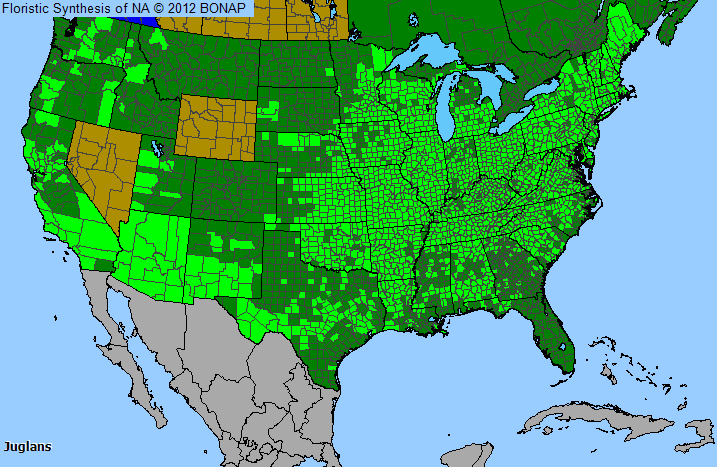
Plant Allergy Overview
Allergenicity
Severe
Pollen Season
Spring
Type
Tree
Sub-Type
Deciduous
Allergy Information
Native and English walnut species are reported to be moderately allergenic. In California and Oregon, walnut pollen was reported to be serious cause of pollinosis, especially where nut orchards are common.
Genus Details
Six species of native walnut and butternut trees are in this genus. Trees grow to over 75 feet tall. The fruit is a nut that is enclosed in a thick leathery casing and is used frequently in baked goods, or eaten plain. Wood from the tree is used in fine furniture. The flowers are catkins with pendulous staminate and single or clustered pistillate flowers at different locations on the same tree. Flowering occurs in late spring after the leaves appear. Walnut pollen is shed in large quantities in the northeastern US during late May and early June. In California, the walnut trees shed abundant pollen from April to early June. Flowering occurs as early as January in mid-Atlantic states and Florida.
Pollen Description
Grains are isopolar, heteropolar (pores on equator and one hemisphere), or paraisopolar; the amb triangular, rounded-triangular or circular and polyporate. The pores are circular, aspidate or flattened-conical, located on the equator and distal face. The sexine is tectate and spinulose and the intine is thickened beneath the apertures.
The grains areusually between 30-40 micrometers.
Genus Distribution

The shaded areas on the map indicates where the genus has been observed in the United States.
 - Native, observed in a county
- Native, observed in a county  - Introduced, observed in a county
- Introduced, observed in a county  - Rarely observed
- Rarely observedSpecies in Walnut Genus
Allergens & Plants Search
Enter a full or partial species name to find more information on one of over 1,200 potentially allergenic plants.
For example, you can find chenopods searching on "cheno"

